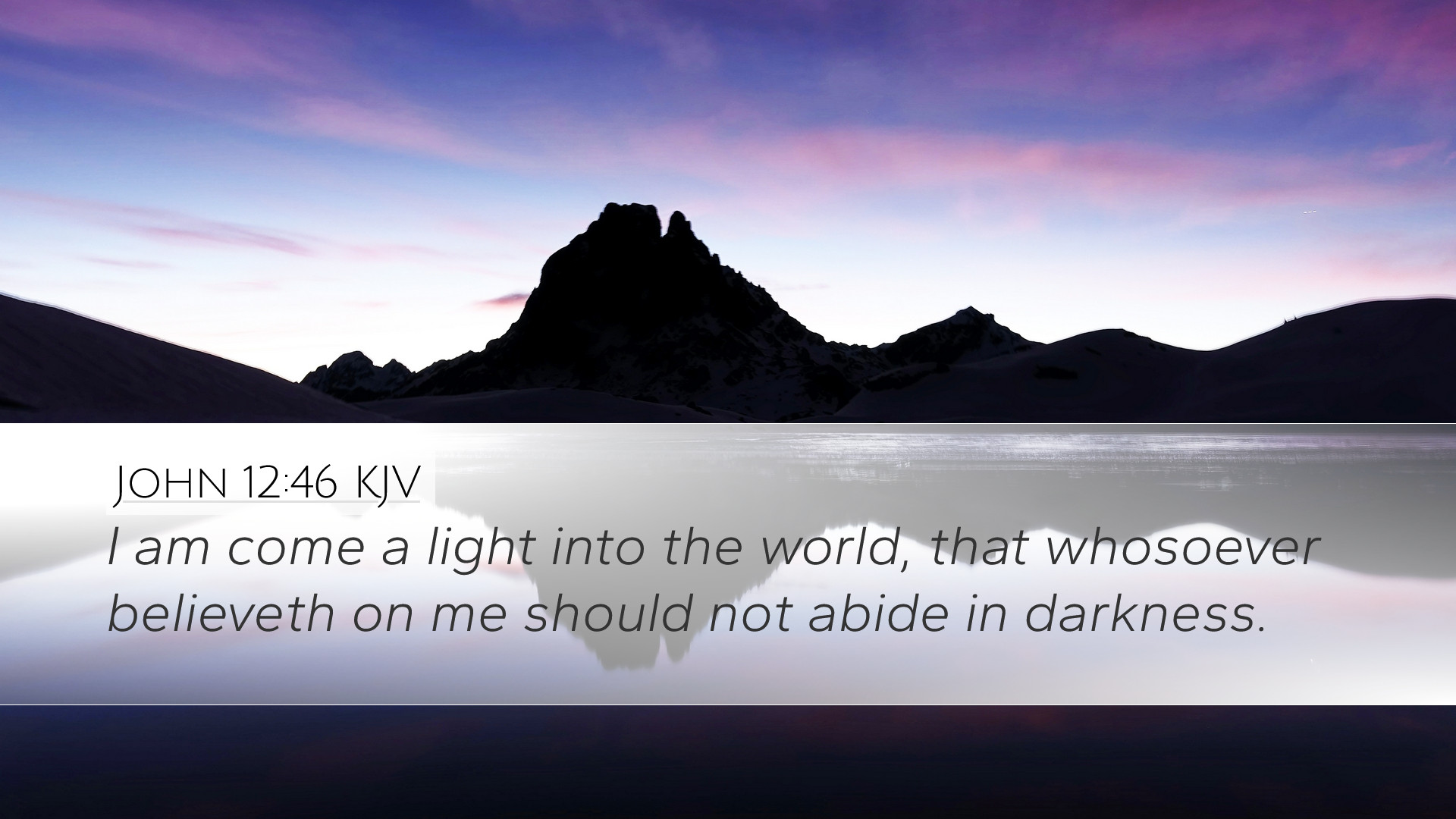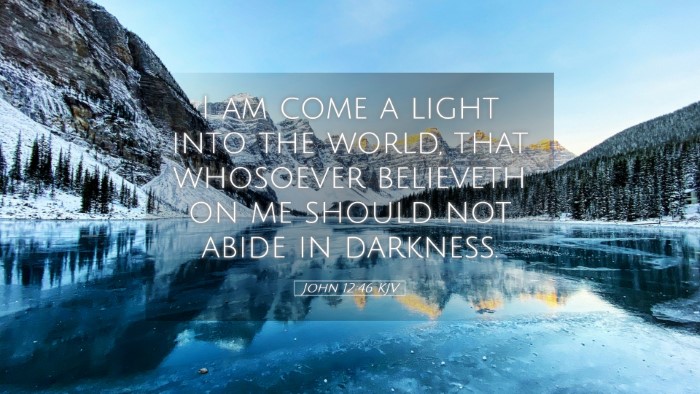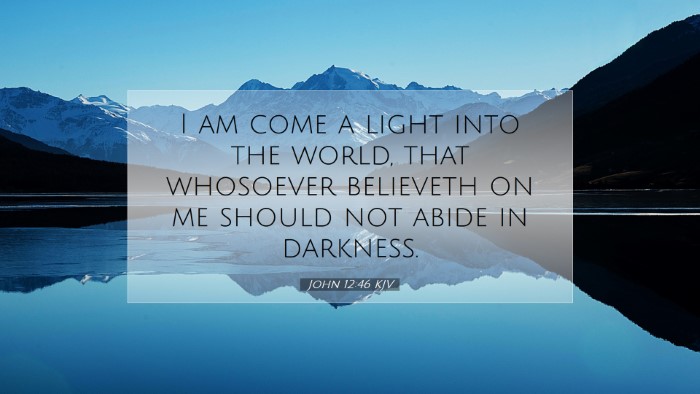Commentary on John 12:46
Verse: "I have come as a light into the world, that whoever believes in Me should not abide in darkness."
Introduction
This verse presents a profound theological claim articulated by Jesus Christ, emphasizing His role as the Light of the world. The implications of this declaration are multifaceted and hold significant relevance for pastoral ministry, theological education, and personal faith. Drawing from the insights of renowned public domain commentators such as Matthew Henry, Albert Barnes, and Adam Clarke, this commentary delves into the meaning and implications of John 12:46.
Theological Significance of "Light"
Matthew Henry poignantly notes that light in scripture symbolizes knowledge, purity, and divine presence. When Jesus declares Himself as the light, he positions Himself as the source of spiritual illumination in a world shrouded in moral and spiritual darkness. The light He provides is not merely an abstract truth but is embodied in His person and works.
Albert Barnes elaborates by emphasizing that the coming of Christ as light signifies His ability to dispel ignorance and sin. The metaphor of light encapsulates the transformative power of Christ's message, which enlightens the hearts and minds of believers.
Adam Clarke adds that the description of Jesus as light also conveys His role as a guide. Just as natural light directs our paths, Christ guides us through the complexities of life, leading us toward righteousness and truth.
The Call to Belief
The second part of the verse, "that whoever believes in Me should not abide in darkness," presents a universal call to faith. Here, the concept of belief is intertwined with the experience of light and darkness. Believing in Christ signifies an acceptance of His teachings and an alignment with His divine nature.
Matthew Henry underscores that belief in Christ is the pathway to stepping out of darkness. He points out that darkness represents not only ignorance but also spiritual death and separation from God. Therefore, Jesus’ invitation to believe is an invitation to life and illumination.
Albert Barnes further stresses that this belief is not merely intellectual assent but involves a heartfelt trust that results in action. The believer, who embraces the light, actively distances themselves from the darkness of sin and doubt.
Adam Clarke comments on the inclusivity of Christ’s invitation. The term "whoever" signifies that the offer of light is available to all, regardless of their background or status. It emphasizes the accessibility of salvation and the hope it affords to every person.
Contrast Between Light and Darkness
The dichotomy of light and darkness throughout scripture is prominent, representing the ongoing struggle between good and evil. John 12:46 succinctly encapsulates this battle.
Matthew Henry articulates that the presence of Christ brings to light the hidden evils within human hearts. The light of Christ exposes sin, urging believers toward repentance and a life reflecting His character.
Albert Barnes notes that living in darkness signifies a state of unawareness regarding one's spiritual condition. Those who remain in darkness are often oblivious to their need for salvation and the peril it entails. The light of Christ aims to awaken such souls.
Adam Clarke points out that those who do not believe effectively choose to remain in darkness despite the light being available. This voluntary blindness is a tragic outcome of rejecting the truth that Christ offers.
Application for Believers
The implications of John 12:46 are profound for contemporary believers. The text encapsulates both a promise and a challenge. On one hand, there is the promise of illumination and guidance; on the other, the challenge to actively choose belief and reject darkness.
Matthew Henry encourages believers to continually seek the light of Christ, suggesting that regular engagement with the scriptures and prayer are vital for living in that light.
Albert Barnes exhorts Christians to be examples of light to others, reflecting the truth and love of Christ in their lives, which in turn will draw others toward faith.
Adam Clarke calls on believers to confront the darkness in their own lives, urging them to identify areas of sin or ignorance that need the redeeming light of Christ. He emphasizes the transformative power of embracing Christ’s truth fully.
Conclusion
John 12:46 is a rich and layered verse that encapsulates the essence of Christ’s mission. It invites believers into a relationship characterized by light, guidance, and transformation. Reflecting on insights from esteemed commentators enriches our understanding and equips us for deeper discipleship and ministry. For pastors, students, theologians, and scholars, this verse serves as a reminder of our calling to embody and share the light of Christ in a world desperate for hope and truth.


